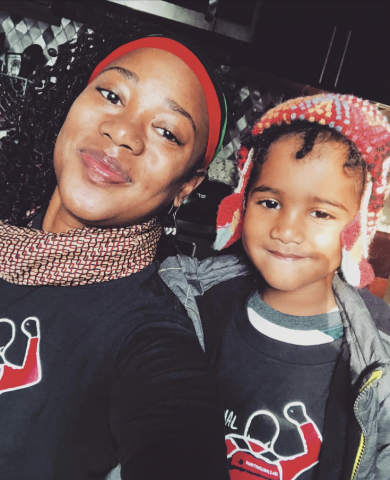
Safety In Our Kids' Schools: Providing Social & Emotional Support
As a parent, I believe that it is essential that my children feel not just physically safe, but also socially and emotionally safe in their schools. As a mental health professional who has worked in both elementary and high schools, I have seen that physical safety is often the primary focus in schools. However, I have also seen that young people need just as much, if not more, socioemotional support.
Socioemotional support occurs when a student participates in interventions that offer positive reinforcements between peers and adults, all while learning how to manage and process their own emotions. In today’s digital world, an increasing number of the young people that counselors like me serve are expressing the need for face-to-face social connection. Instead, in most schools, there is hyper-focus on academic data, the “metrics” behind school ratings, and a school’s “image.” In environments driven by data and test scores, socioemotional support is not valued as an end in itself, but turned to when students begin to wear down under stress.
Many of my students complain that they are seen as just a student ID number instead of as a whole person. Like most of my colleagues, I chose this field because of my interest and desire to understand and impact the world around me through my socioemotional intelligence. To be skilled in socioemotional intelligence is to have the ability to monitor, value, and acknowledge one's own emotions and those of others, and to appropriately use and manage emotional information to guide thinking and behavior. Every day, I work with resilient and beautiful young people to enhance their socioemotional intelligence, as they try to navigate in this world we adults have helped to create. When counselors, psychologists, social workers and administration come together for “Care Team” meetings, our job is to provide interventions that support students as whole people. A Care Team is a team of professionals skilled at socioemotional interventions. We plan and implement best-practice interventions for students in need of additional support for their well-being and academic success. The interventions might relate to anger management, trauma, anxiety, or depression.
This thoughtful and proactive approach to addressing root causes of the issues affecting students, however, is unfortunately not the case for the many police within our schools. Police are by nature reactive, and their interventions usually consist of arrest and incarceration. During the tenure of Mayor Richard M. Daley, there was an increase in the use of metal detectors, security, and police within Chicago Public Schools. In particular, the 2009 beating death of Fenger High School student Derrion Albert led to a closer relationship between CPD & CPS. Derrion Albert’s death was seen across the world, and, from the mayor’s perspective, put the city in a very bad light. His turn to the CPD was an immediate and visible response that did nothing to address the underlying issues that had caused that eruption of physical violence. His decision was not made with insight from experienced youth professionals skilled in addressing trauma in a systematic manner.
In 2009, I was a counselor at another south side high school when Derrion Albert was killed. Before CPS had established its current “crisis team” response, neighboring schools would send extra counselors to an affected school to help grieving students. I was among those extra counselors temporarily reassigned to Fenger High School. Our work there was short-lived. We were sent back to our schools after just two days at Fenger. In retrospect, it was actually counterproductive. Youth with chronic exposure to violence need more than a counselor to come for a few hours to console them. They need a full counseling staff that can build a rapport with them and connect their family members with outside support. I was simply there to place a bandage on a gaping hole. Schools with the most visible CPD presence, such as Fenger, are predominantly in neighborhoods that have a history of trauma, poverty, and a lack of resources. There is rarely sufficient funding to provide proper mental health resources to these students.
Counselors develop a repertoire of skills to advocate for students and their families. Police are there to finalize a situation that is no longer solvable. Counselors empower, police intimidate. Counselors are trained in recognizing triggers, police are trained to pull them. Counselors can mediate between a school staff member and a student, police write reports and often exacerbate the issue. I understand that not all police are defective humans hiding behind a badge. Some are actually skilled in a way that mirrors a counselor. And some counselors are hiding behind a caring image while their words and actions may be tainted by racism, classism, sexism, heterosexism, or adultism. However, as parents who want the best for our children, we should work to ensure that the counseling staff at our children’s schools are adequate and effective at serving all of their varying needs. This will have a much greater impact on our children than trying to make sure that there are “good cops” at their school.
We, as parents, are the ones with the real power to make things happen. We are the ones that can demand change because there is strength in numbers. We are what makes the LSC consider parents’ perspectives. We are what bridges community to school and what makes the phrase “community school” have actual meaning. We are the ones that can help decrease police presence in the school and demand more counselors and social workers.
As a mental health professional and as a parent, I am asking you to reach out and connect with other parents at your child’s school. The more parents are involved in the LSC, PAC, BAC, PTA and other parent-friendly organizations, the more power we will have to increase the resources and interventions that support our children’s emotional, psychological and physical needs.
Here are some suggested questions to ask your principal so that you can begin to increase socioemotional supports in your child’s school:
What are the different options for parents to be involved in our school? (LSC, PAC, etc.)
What is the current status of socioemotional programs in the school? Is there a plan to expand them?
What can we do to increase the number of socioemotional programs, activities, etc?
What is the counselor student ratio at our school?
How can we hire additional counselors and social workers, or have them spend more days at our school?
Is there a committee to help raise more money for the school? How can I join?
As a very involved mom, I know without a shadow of a doubt, that it has been and will always be the parents who blaze the trails toward true progress in expanding socioemotional interventions and growth for our children.
Keisha J. Mathew is a mother of two kind, free-thinking young leaders she cheers on regularly. She holds a master’s degree in clinical social work with a concentration in community schools from the University of Chicago. Her work with youth is a life-long passion that continues to take on different forms through her love for the arts and social justice. She is married to a CPS teacher and proud CTU member. She tries to squeeze in writing between running around the city with her family, hanging with beloved girlfriends, and practicing some well deserved self-care.



The views and opinions expressed in this post are those of the author(s) and do not necessarily reflect those of MomsRising.org.
MomsRising.org strongly encourages our readers to post comments in response to blog posts. We value diversity of opinions and perspectives. Our goals for this space are to be educational, thought-provoking, and respectful. So we actively moderate comments and we reserve the right to edit or remove comments that undermine these goals. Thanks!